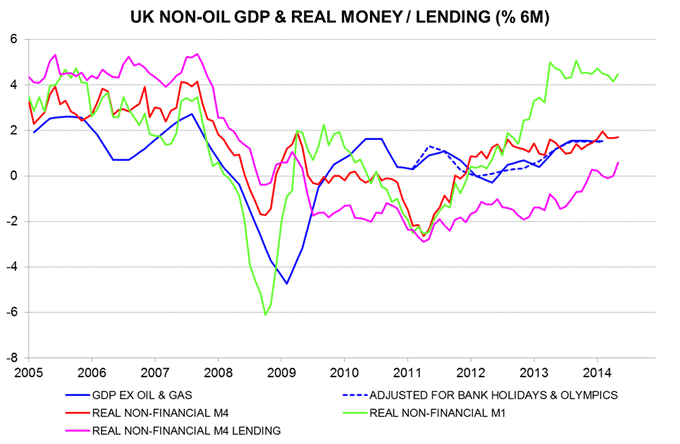UK monetary trends remain expansionary, suggesting no slowdown in economic growth and rising medium-term inflation risks.
The preferred narrow and broad monetary aggregates here are non-financial M1 and M4, i.e. comprising holdings of households and non-financial firms. Non-financial M1 grew by 10.3% annualised in the six months to May, while M4 was up by 4.5%.
Demand and output follow the real or inflation-adusted money supply by about six months, according to the Friedmanite rule. Six-month growth in real non-financial M1 surged in 2012, predicting last year’s pick-up in the economy – see chart. It has stabilised since early 2013 at a strong level by historical standards. Recent GDP expansion of 3% plus annualised should be sustained at least through end-2014.
Real non-financial M4 growth is also tracking sideways, albeit at a significantly lower level. Real bank lending, meanwhile, is finally reviving – credit, unlike money, tends to lag rather than lead the economic cycle.
Low deposit interest rates have cut the demand to hold broad money while encouraging a shift from time deposits to sight deposits and cash, which comprise M1. The M4 numbers, in other words, understate monetary laxity while M1 may exaggerate it.
This demand change has been reflected in the velocity of circulation of non-financial M4, which has risen by about 0.5% per annum (pa) since the financial crisis, having fallen by more than 3% pa over the prior decade. Non-financial M4 growth of 4.5% now, therefore, is the equivalent – in terms of nominal GDP generation – of about 8% before the crisis. Put differently, current M4 growth and a velocity rise of 0.5% pa imply nominal GDP expansion of 5% pa – too high to meet the 2% inflation target over the medium term.